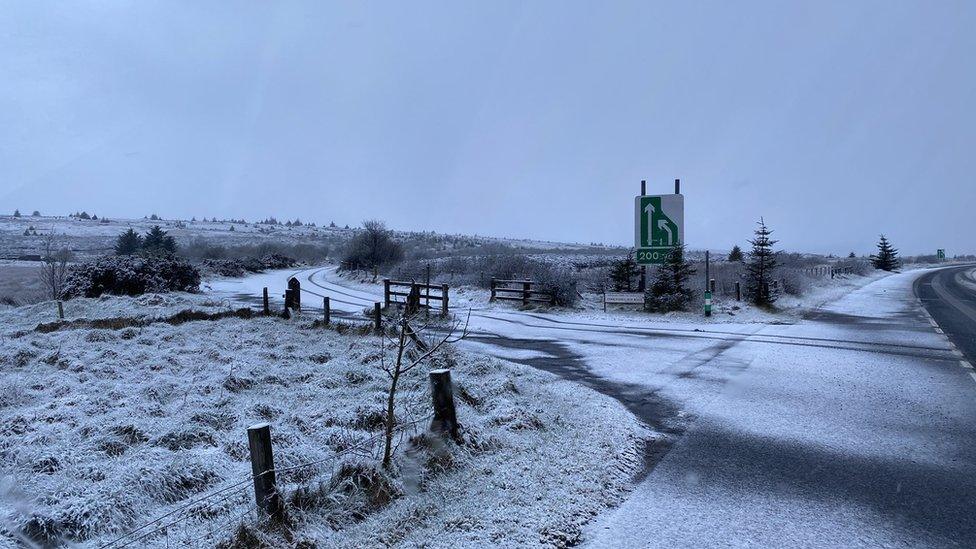Why is my weather app struggling with May showers?
- Published

We've all heard the phrase "April showers" but this year April was dry and cool and the showers skipped over to May.
Low pressure has dominated our weather this month, which in simple terms usually means rising air, perfect for shower formation.
May is traditionally thought of as a dry month but not this year.
The jet stream, which transports our weather systems, is much further south than we would like.
This has carried several areas of low pressure our way, bringing chilly air from northern latitudes.
That, coupled with strong May sunshine, is perfect for both hail and thunderstorms.
Weather app struggles
The problem is that although we can predict the conditions ideal to make showers, it is practically impossible to predict where and when they will occur.
This is why the apps struggle.
So many local details can impact on showers that a computer model just can't simulate, unlike, for example, a weather system which has developed over the Atlantic.
These large systems can be modelled very well and so a weather app can predict quite closely what time rain will arrive at your location.

April was dry and cool and the showers skipped over to May
Every shower is individual and has a life cycle, usually a number of minutes rather than days.
Maybe you remember some geography lessons or simple physics or - even better - you have finished the weather part of "the world around us" at school.
Basic ingredients are moisture, a heat source and an atmosphere that promotes rising air i.e. unstable and characteristic of low pressure.
Usually from April onwards the strengthening sun becomes the heat source, whereas in winter the relatively warm sea water does the job.
This is why coastal areas get more showers in winter months both day and night.
The sun heats the air at ground level, so a mountain top has an advantage as the air is already forced to rise up one side of the mountain.
The air will keep rising until it reaches the same temperature as the surrounding air. It then condenses out into cloud.

Umbrellas have been much needed this May
Think of steam from your kettle forming a mini cloud and then condensing into water droplets on cooler surfaces.
The higher the air rises the deeper and more energetic the cloud will be.
This May various areas of low pressure have settled nearby and allowed vigorous ascent which allows clouds to form of great depth, thousands of feet high in the atmosphere.
Because the air has had cold origins, temperatures at the top of the cloud are several degrees below zero and therefore the cloud is not just made up of water droplets but also ice crystals.
Within the cloud there is a circulation of rising and falling air.
When the shower 'erupts' - becomes very black and can no longer hold its contents - the force of the downward movement is so powerful the ice crystals within the cloud will not melt before reaching the ground hence hailstones.
Sometimes these clouds - called cumulonimbus - produce thunder and lightning.
That is a lot to take in but remember, these shower clouds have a life cycle.
As Isaac Newton said: "What goes up must come down."
So that rising air has to come down somewhere and that process has a drying, warming effect on the surrounding air, which restricts shower formation.
This is why you can be driving along the motorway and get caught in a heavy shower while a few miles down the road it is bone dry.
Related topics
- Published5 May 2021
